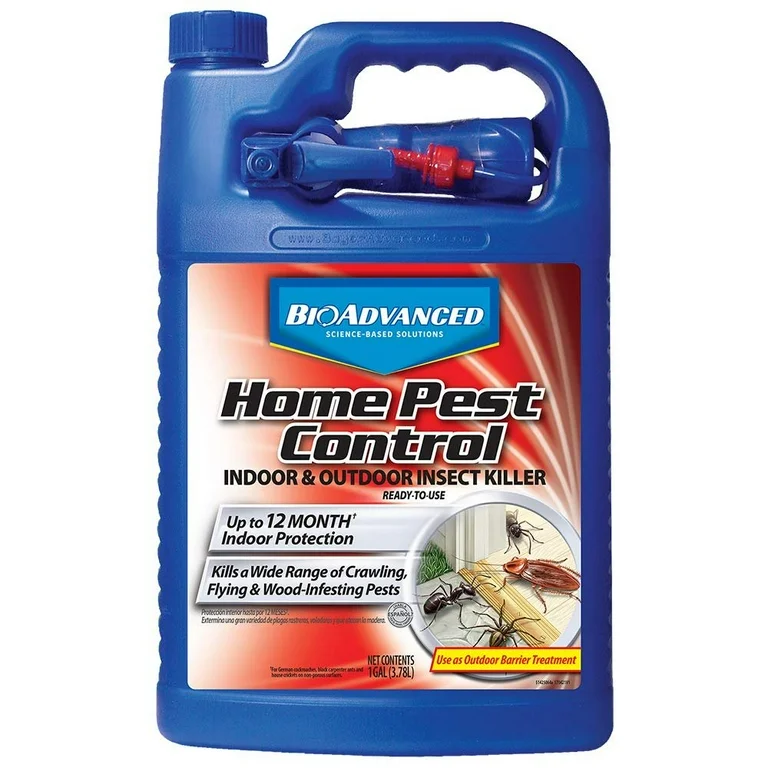Effective A1 Bed Bug Treatment in Charlotte - Safe and Proven Methods
Effective A1 Bed Bug Treatment in Charlotte - Safe and Proven Methods
Blog Article
Bed Pest Treatment Breakdown: Contrasting Chemical Vs. Non-Chemical Solutions
In the realm of insect control, specifically when managing the persistent issue of bed bugs, the selection in between chemical and non-chemical therapy remedies can be a pivotal one. Both techniques use unique benefits and downsides, affecting elements such as performance, safety factors to consider, and total price. By checking out the nuanced information of each method, a clearer understanding of which course to pursue in dealing with a bed pest problem can be obtained.
Efficiency of Chemical Therapies
Chemical therapies for bed pest infestations have actually been widely recognized for their potent and fast efficacy in removing these pests. When thinking about the performance of chemical therapies, it is vital to recognize that they can provide a quick and comprehensive remedy to a bed bug issue. Specialist pest control specialists usually rely on pesticides to target bed pests at different stages of their life cycle, including adults, eggs, and nymphs. These chemicals commonly function by interrupting the bed pests' nerve system, causing paralysis and eventual fatality.
Moreover, chemical therapies have the benefit of supplying residual impacts, indicating that they can continue to remove bed pests even after the preliminary application. This recurring activity is particularly helpful in combating any type of potential re-infestations. Additionally, the rapid action of chemical treatments can bring alleviation to people facing extreme bed insect problems, enabling them to regain control of their space promptly.
Safety And Security Interest In Chemical Solutions
One vital facet that calls for cautious factor to consider when utilizing chemical remedies for bed pest treatment is making sure the safety of owners and the atmosphere. While chemical therapies can be efficient in removing bed bugs, they might position threats otherwise managed effectively. One of the primary security interest in chemical options is the possible damage they can cause to human health and wellness. Exposure to particular chemicals utilized in bed pest therapies can bring about respiratory concerns, skin irritation, or other damaging responses, specifically in people with pre-existing problems or level of sensitivities. Additionally, incorrect application or dosage of chemical pesticides can lead to hazardous deposits sticking around in the treated location, posturing long-term health and wellness dangers to residents.
Moreover, the environmental impact of chemical options is one more considerable consideration. Some pesticides made use of in bed bug therapies may be harmful to beneficial pests, wildlife, and environments if they leach right into the soil or water supply. It is vital to utilize chemical treatments judiciously, following safety and security guidelines, and considering less toxic alternatives to minimize these risks and make sure the efficient and safe administration of bed insect problems.
Advantages of Non-Chemical Approaches
Taking into consideration the possible security concerns and ecological impact connected with chemical solutions for bed bug treatment, discovering non-chemical strategies presents an appealing choice with several distinctive benefits. Non-chemical techniques offer a more secure alternative for families, especially those with animals, youngsters, or people conscious extreme chemicals. These techniques get rid of the risks of exposure to poisonous substances, minimizing the capacity for bed bug pest control damaging health and wellness impacts. In addition, non-chemical therapies are eco pleasant, as they do not add to air or water pollution, making them a lasting option for pest control.
Furthermore, non-chemical services can be effective in targeting bed insects, consisting of hard-to-reach areas where chemical therapies might not penetrate. Approaches such as warmth treatment, vacuuming, heavy steam cleansing, and mattress encasements supply detailed elimination without the usage of dangerous chemicals. Furthermore, non-chemical methods can be much less turbulent, calling for minimal prep work and enabling quicker reentry into dealt with locations. In general, deciding for non-chemical bed insect treatment approaches not only focuses on safety and environmental management yet also makes sure efficient and thorough parasite control.
Limitations of Non-Chemical Treatments

Furthermore, non-chemical treatments commonly call for multiple applications to accomplish effective eradication. This can be time-consuming and may not always guarantee total elimination of all bed insects and their eggs, particularly in hard-to-reach or covert locations.
Additionally, the success of non-chemical therapies greatly depends on proper implementation and thoroughness, which can be testing for individuals without specialist competence. Insufficient application of non-chemical techniques might lead to incomplete obliteration, causing relentless invasions and the requirement for extra therapies.
As a result, while non-chemical treatments have their benefits, it is vital to acknowledge these constraints and consider them when establishing one of the most reliable method for handling bed insect infestations.
Price Comparison: Chemical Vs. Non-Chemical Options
Offered the limitations linked with non-chemical treatments, an essential facet to review in the context of bed bug administration is the cost contrast in between chemical and non-chemical options. In contrast, non-chemical treatments like heat therapy or heavy steam can be much more pricey, with costs ranging from $1,000 to $6,000 for an entire home. While the first cost of chemical therapies may appear lower, multiple treatments may be required to totally eradicate the problem, potentially enhancing the total cost.
Verdict

Considering the possible security worries and environmental impact associated with chemical remedies for bed insect treatment, discovering non-chemical techniques offers a promising choice with a number of distinct advantages.Given the constraints associated with non-chemical therapies, an important facet to assess in the context of bed insect monitoring is the price comparison in between chemical and non-chemical choices. In contrast, non-chemical therapies like warmth therapy or vapor can be extra view it costly, with costs varying from $1,000 to $6,000 for an entire home. While the preliminary expense of chemical treatments might seem lower, numerous treatments might be required to completely eliminate the infestation, possibly boosting the general visit the site price.In verdict, when comparing chemical and non-chemical bed insect therapy alternatives, it is essential to take into consideration effectiveness, safety, benefits, limitations, and price.
Report this page